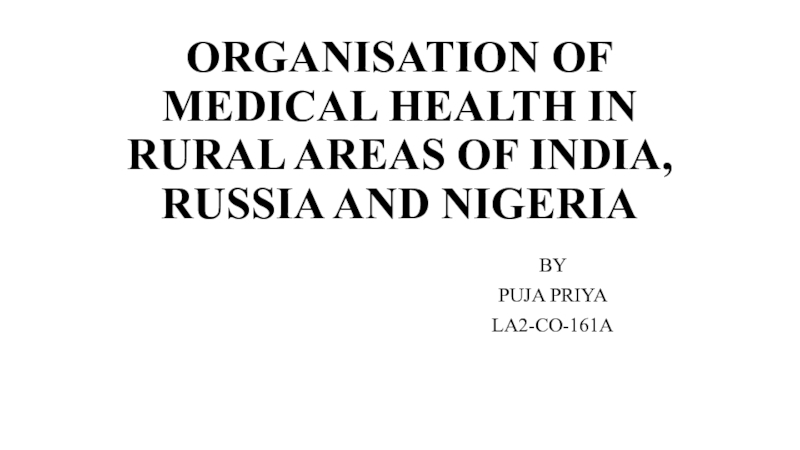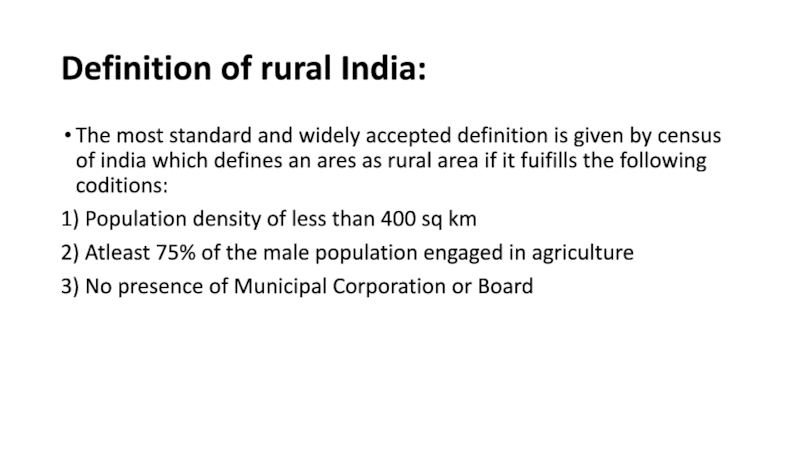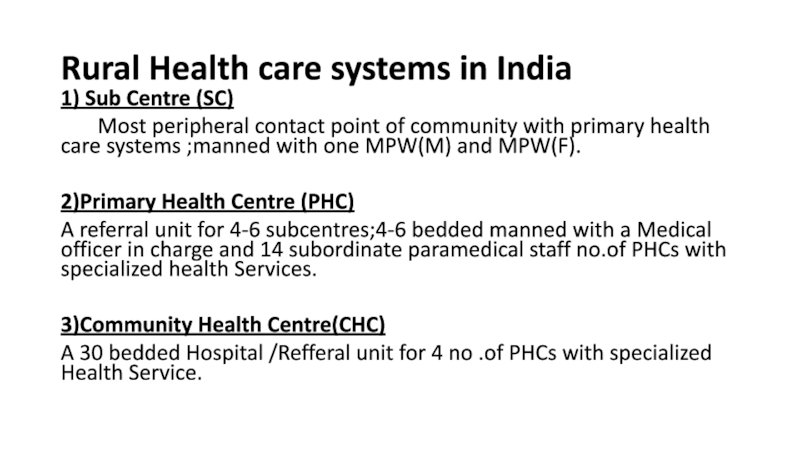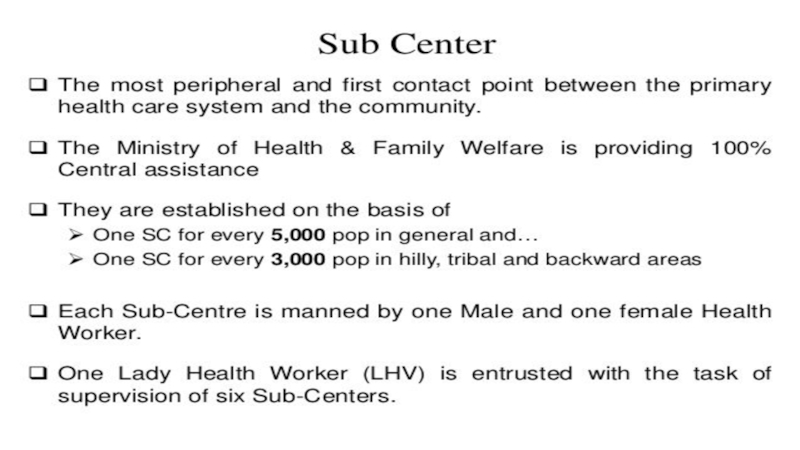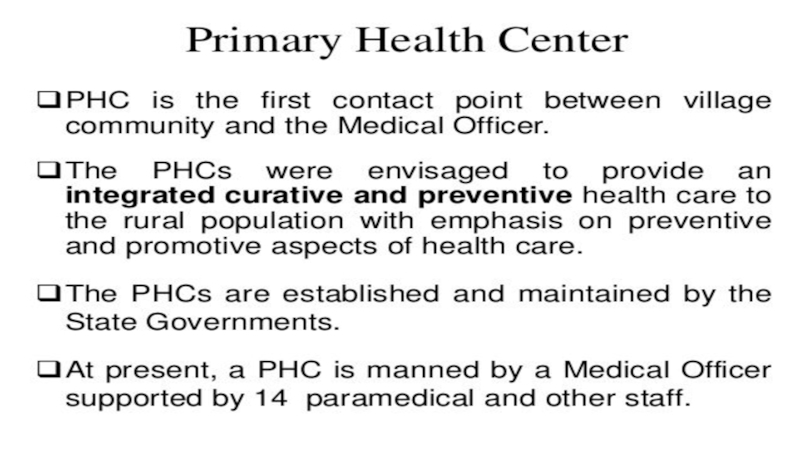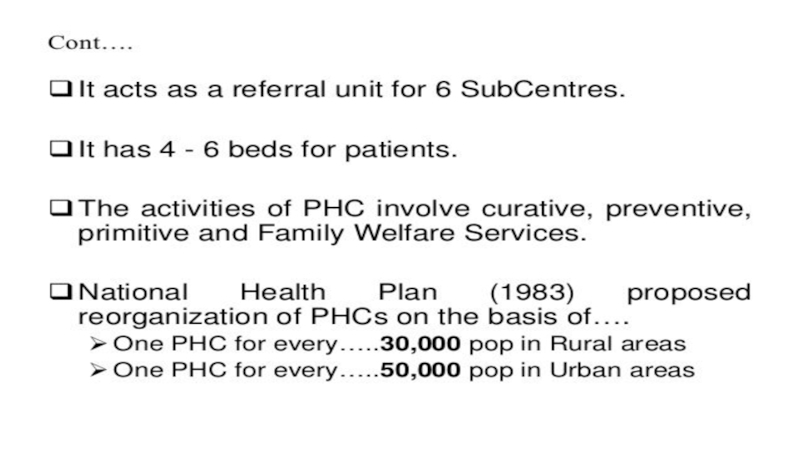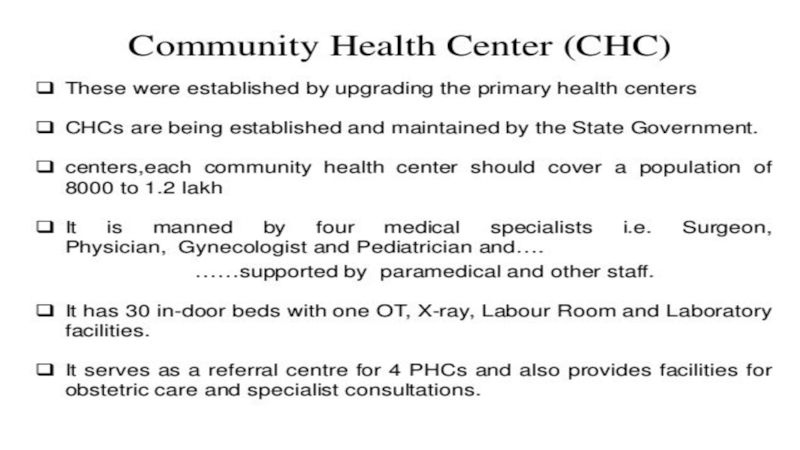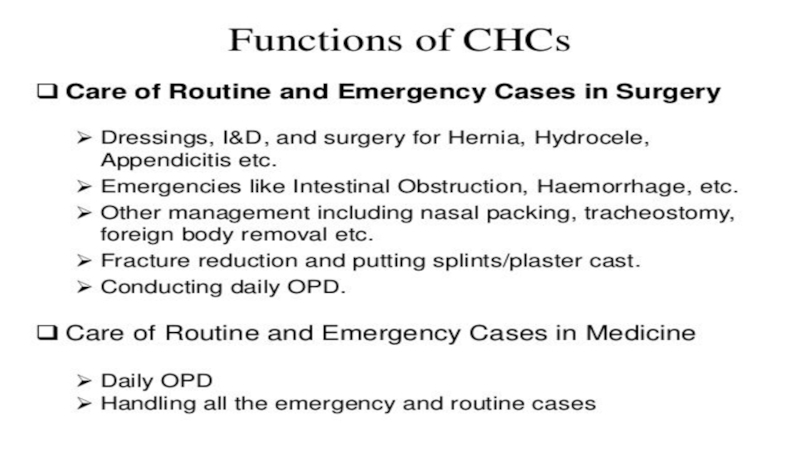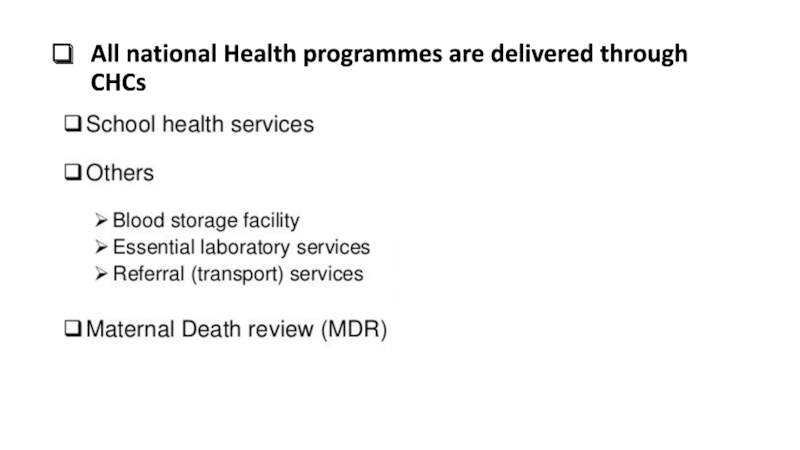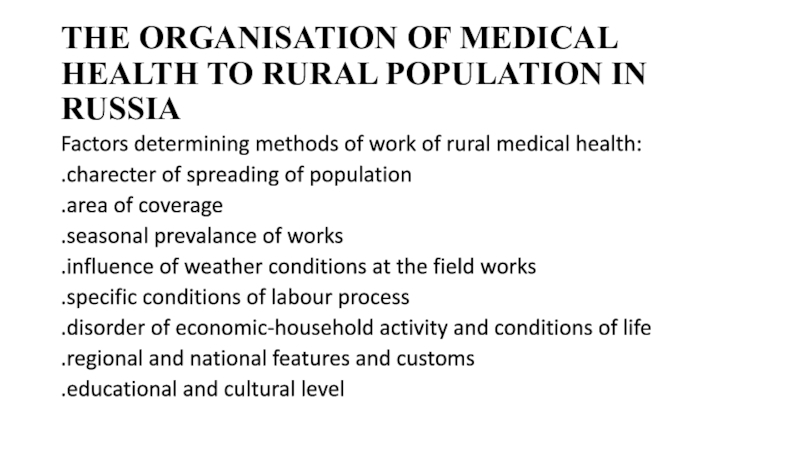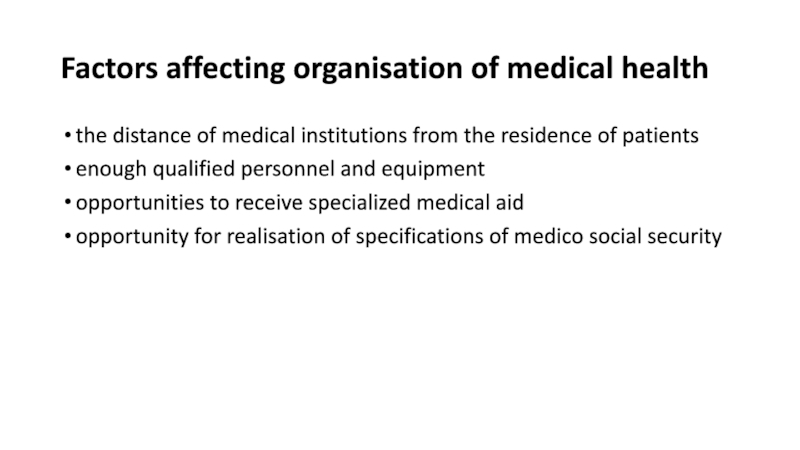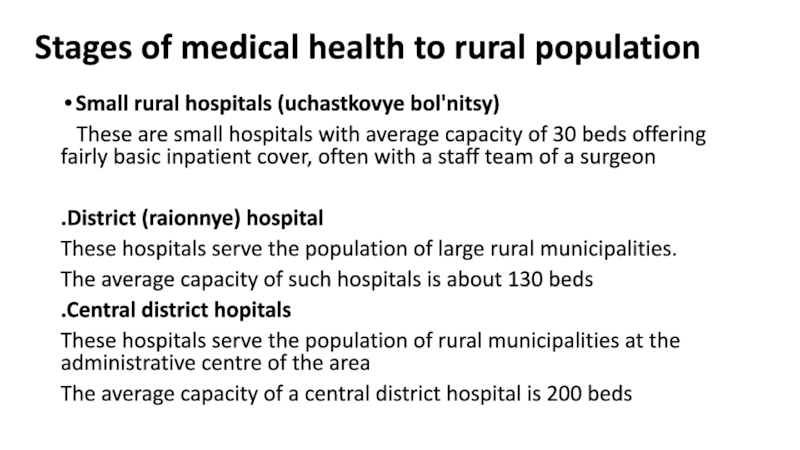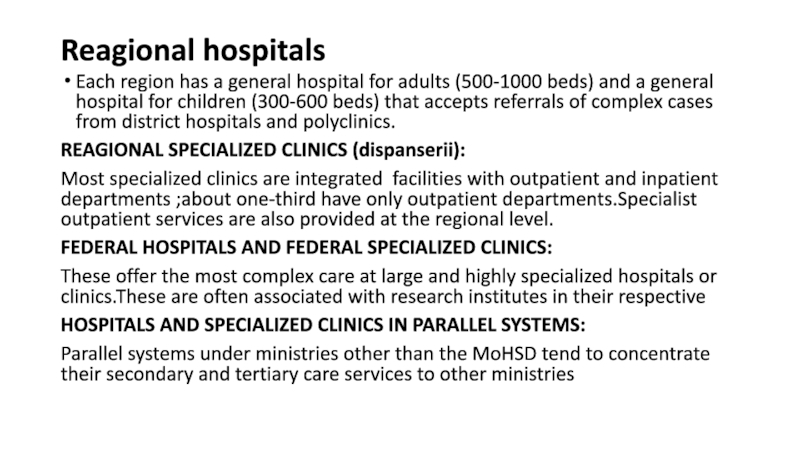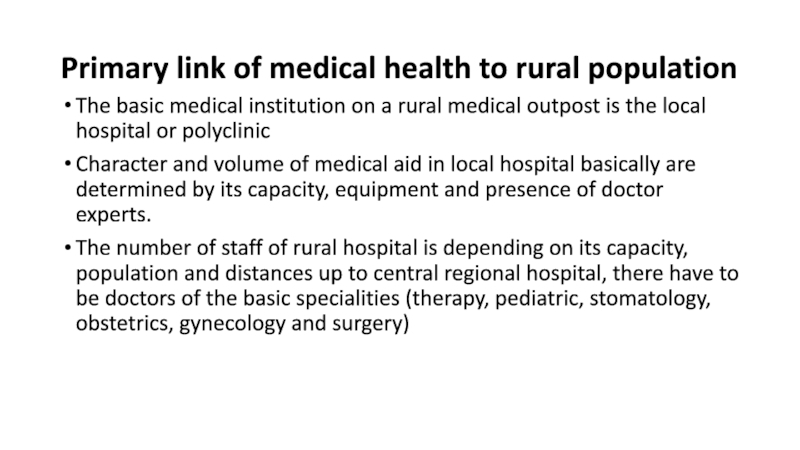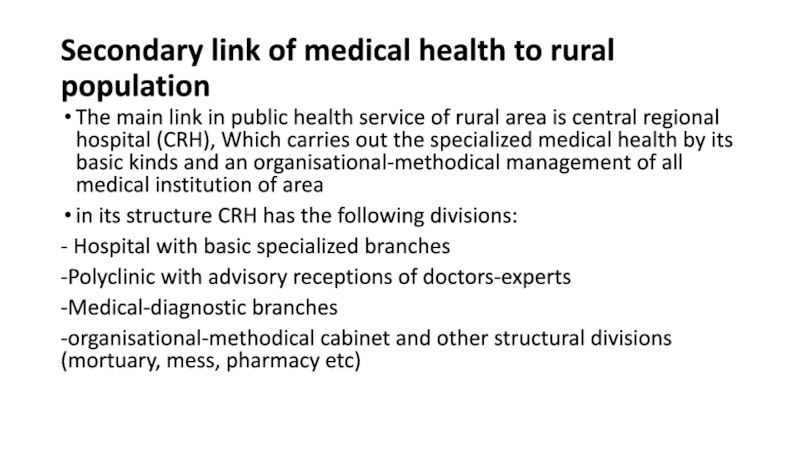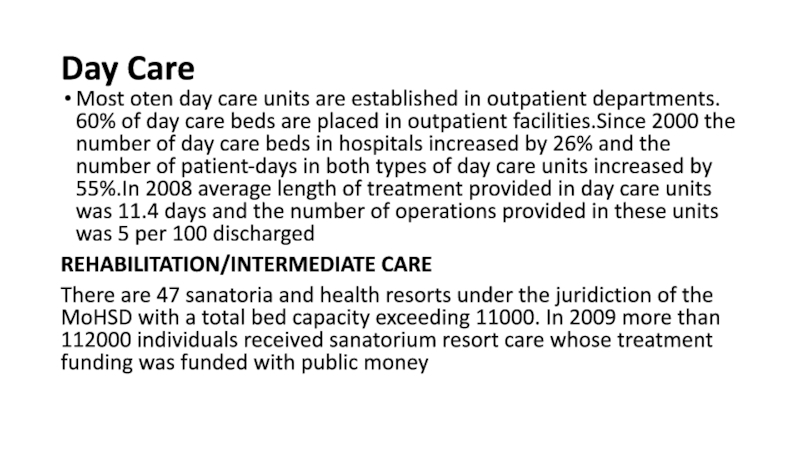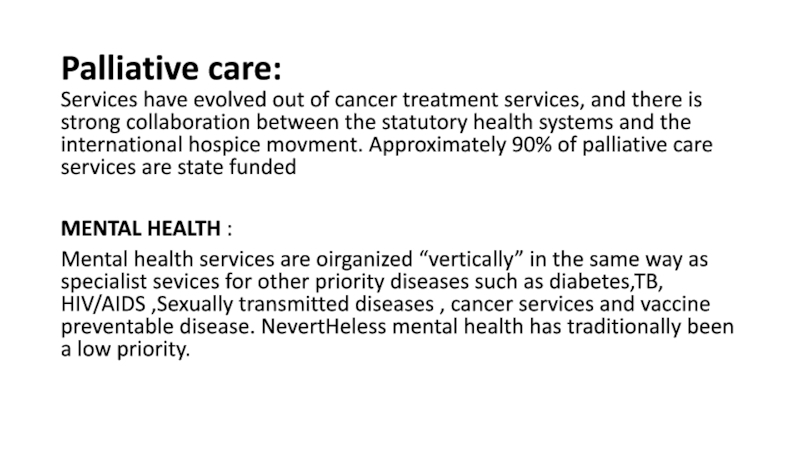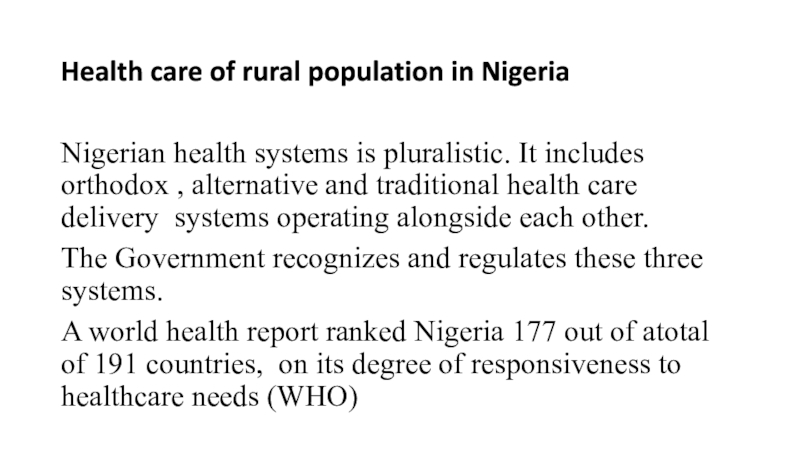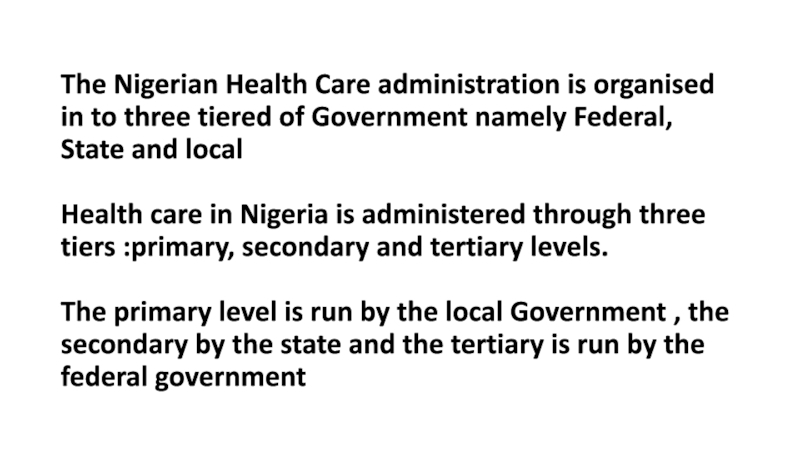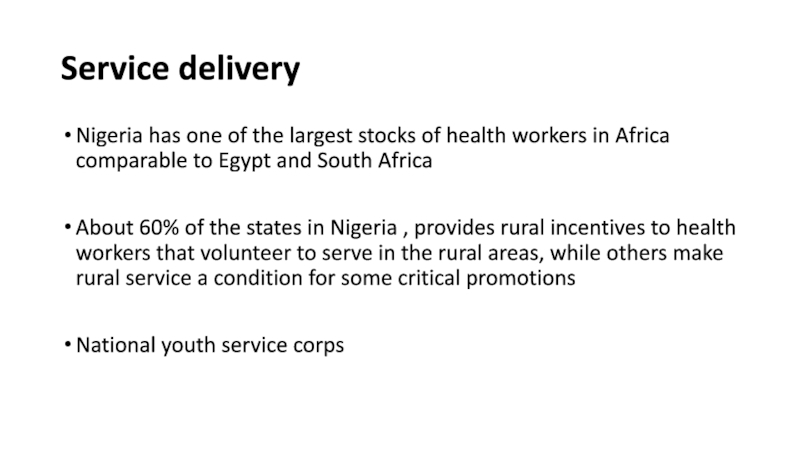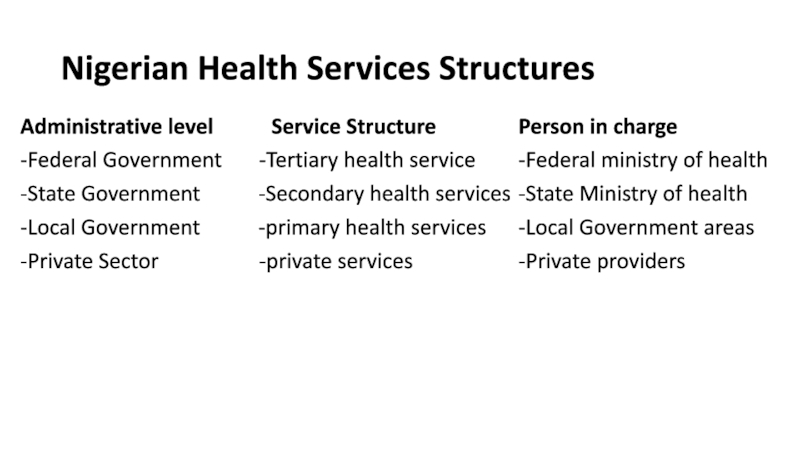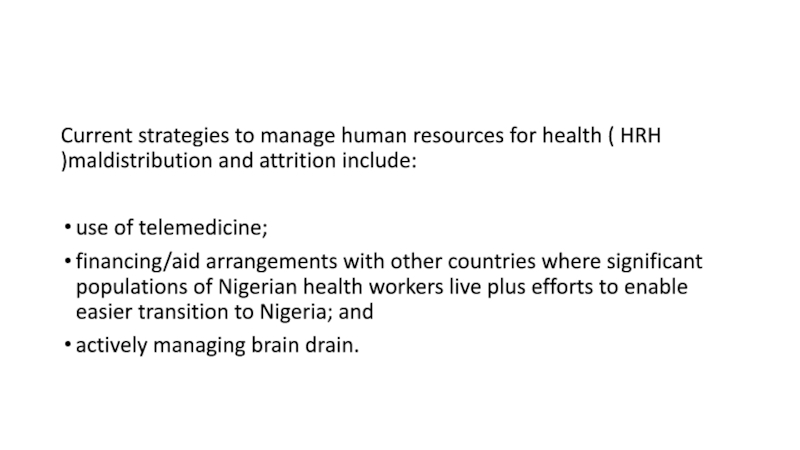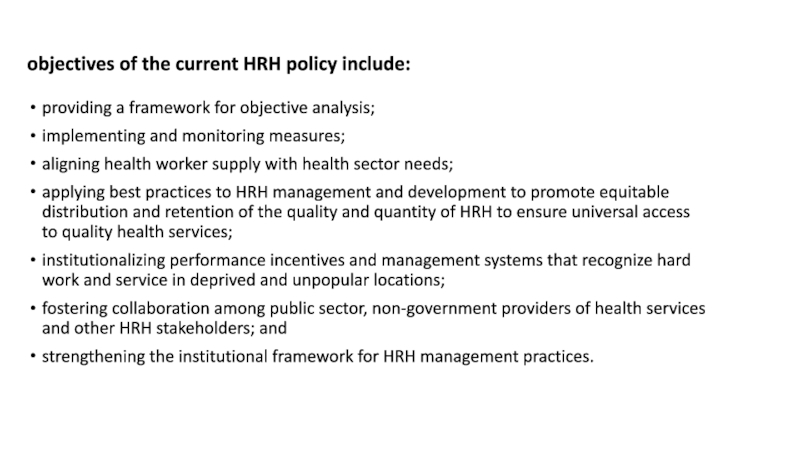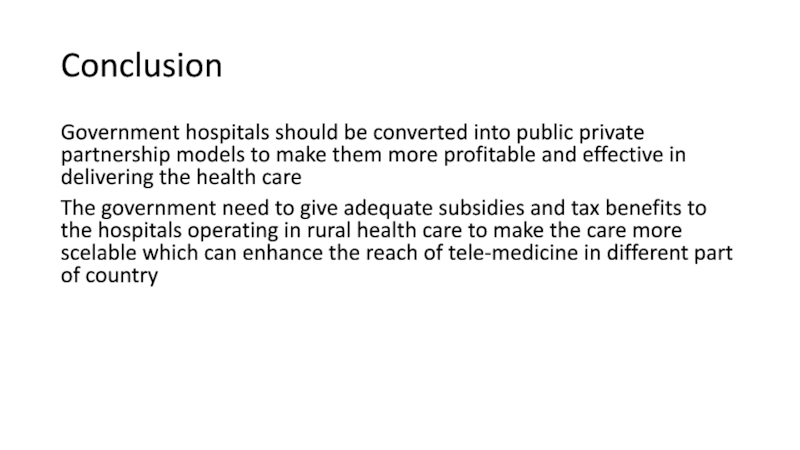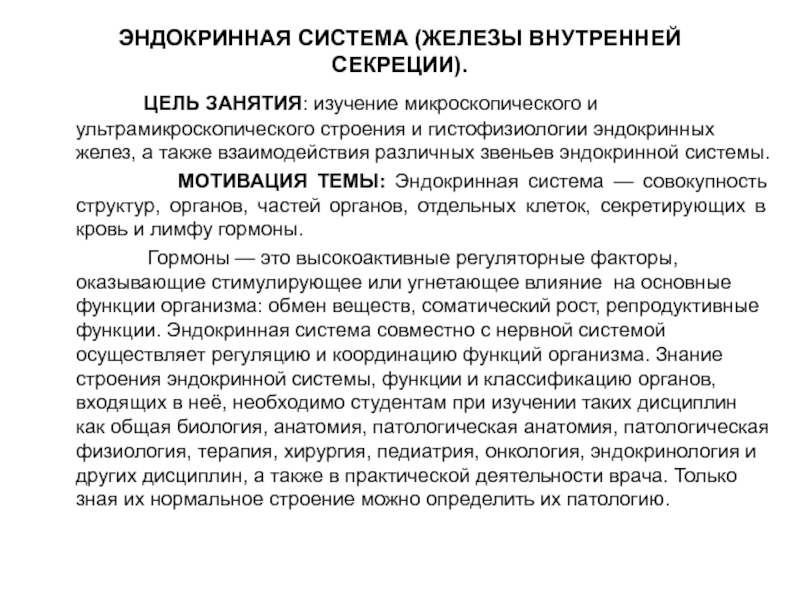Разделы презентаций
- Разное
- Английский язык
- Астрономия
- Алгебра
- Биология
- География
- Геометрия
- Детские презентации
- Информатика
- История
- Литература
- Математика
- Медицина
- Менеджмент
- Музыка
- МХК
- Немецкий язык
- ОБЖ
- Обществознание
- Окружающий мир
- Педагогика
- Русский язык
- Технология
- Физика
- Философия
- Химия
- Шаблоны, картинки для презентаций
- Экология
- Экономика
- Юриспруденция
ORGANISATION OF MEDICAL HEALTH IN RURAL AREAS OF INDIA, RUSSIA AND NIGERIA
Содержание
- 1. ORGANISATION OF MEDICAL HEALTH IN RURAL AREAS OF INDIA, RUSSIA AND NIGERIA
- 2. Definition of rural India:The most standard and
- 3. Rural Health care systems in India1) Sub
- 4. Слайд 4
- 5. Слайд 5
- 6. Слайд 6
- 7. Слайд 7
- 8. Слайд 8
- 9. Слайд 9
- 10. All national Health programmes are delivered through CHCs
- 11. THE ORGANISATION OF MEDICAL HEALTH TO RURAL
- 12. Factors affecting organisation of medical health the
- 13. Stages of medical health to rural populationSmall
- 14. Reagional hospitals Each region has a
- 15. Primary link of medical health to rural
- 16. Secondary link of medical health to rural
- 17. Day CareMost oten day care units are
- 18. Palliative care:Services have evolved out of cancer
- 19. Health care of rural population in NigeriaNigerian
- 20. The Nigerian Health Care administration is organised
- 21. Service delivery Nigeria has one of the
- 22. Nigerian Health Services StructuresAdministrative level
- 23. Current strategies to manage human resources for
- 24. objectives of the current HRH policy include:providing
- 25. ConclusionGovernment hospitals should be converted into public
- 26. Слайд 26
- 27. Скачать презентанцию
Definition of rural India:The most standard and widely accepted definition is given by census of india which defines an ares as rural area if it fuifills the following coditions:1) Population density
Слайды и текст этой презентации
Слайд 2Definition of rural India:
The most standard and widely accepted definition
is given by census of india which defines an ares
as rural area if it fuifills the following coditions:1) Population density of less than 400 sq km
2) Atleast 75% of the male population engaged in agriculture
3) No presence of Municipal Corporation or Board
Слайд 3Rural Health care systems in India
1) Sub Centre (SC)
Most peripheral contact point of community with primary
health care systems ;manned with one MPW(M) and MPW(F).2)Primary Health Centre (PHC)
A referral unit for 4-6 subcentres;4-6 bedded manned with a Medical officer in charge and 14 subordinate paramedical staff no.of PHCs with specialized health Services.
3)Community Health Centre(CHC)
A 30 bedded Hospital /Refferal unit for 4 no .of PHCs with specialized Health Service.
Слайд 11THE ORGANISATION OF MEDICAL HEALTH TO RURAL POPULATION IN RUSSIA
Factors
determining methods of work of rural medical health:
.charecter of spreading
of population.area of coverage
.seasonal prevalance of works
.influence of weather conditions at the field works
.specific conditions of labour process
.disorder of economic-household activity and conditions of life
.regional and national features and customs
.educational and cultural level
Слайд 12Factors affecting organisation of medical health
the distance of medical
institutions from the residence of patients
enough qualified personnel and equipment
opportunities
to receive specialized medical aidopportunity for realisation of specifications of medico social security
Слайд 13Stages of medical health to rural population
Small rural hospitals (uchastkovye
bol'nitsy)
These are small hospitals with average capacity of
30 beds offering fairly basic inpatient cover, often with a staff team of a surgeon .District (raionnye) hospital
These hospitals serve the population of large rural municipalities.
The average capacity of such hospitals is about 130 beds
.Central district hopitals
These hospitals serve the population of rural municipalities at the administrative centre of the area
The average capacity of a central district hospital is 200 beds
Слайд 14Reagional hospitals
Each region has a general hospital for adults
(500-1000 beds) and a general hospital for children (300-600 beds)
that accepts referrals of complex cases from district hospitals and polyclinics.REAGIONAL SPECIALIZED CLINICS (dispanserii):
Most specialized clinics are integrated facilities with outpatient and inpatient departments ;about one-third have only outpatient departments.Specialist outpatient services are also provided at the regional level.
FEDERAL HOSPITALS AND FEDERAL SPECIALIZED CLINICS:
These offer the most complex care at large and highly specialized hospitals or clinics.These are often associated with research institutes in their respective
HOSPITALS AND SPECIALIZED CLINICS IN PARALLEL SYSTEMS:
Parallel systems under ministries other than the MoHSD tend to concentrate their secondary and tertiary care services to other ministries
Слайд 15Primary link of medical health to rural population
The basic medical
institution on a rural medical outpost is the local hospital
or polyclinicCharacter and volume of medical aid in local hospital basically are determined by its capacity, equipment and presence of doctor experts.
The number of staff of rural hospital is depending on its capacity, population and distances up to central regional hospital, there have to be doctors of the basic specialities (therapy, pediatric, stomatology, obstetrics, gynecology and surgery)
Слайд 16Secondary link of medical health to rural population
The main
link in public health service of rural area is central
regional hospital (CRH), Which carries out the specialized medical health by its basic kinds and an organisational-methodical management of all medical institution of areain its structure CRH has the following divisions:
- Hospital with basic specialized branches
-Polyclinic with advisory receptions of doctors-experts
-Medical-diagnostic branches
-organisational-methodical cabinet and other structural divisions (mortuary, mess, pharmacy etc)
Слайд 17Day Care
Most oten day care units are established in outpatient
departments. 60% of day care beds are placed in outpatient
facilities.Since 2000 the number of day care beds in hospitals increased by 26% and the number of patient-days in both types of day care units increased by 55%.In 2008 average length of treatment provided in day care units was 11.4 days and the number of operations provided in these units was 5 per 100 dischargedREHABILITATION/INTERMEDIATE CARE
There are 47 sanatoria and health resorts under the juridiction of the MoHSD with a total bed capacity exceeding 11000. In 2009 more than 112000 individuals received sanatorium resort care whose treatment funding was funded with public money
Слайд 18Palliative care:
Services have evolved out of cancer treatment services, and
there is strong collaboration between the statutory health systems and
the international hospice movment. Approximately 90% of palliative care services are state fundedMENTAL HEALTH :
Mental health services are oirganized “vertically” in the same way as specialist sevices for other priority diseases such as diabetes,TB, HIV/AIDS ,Sexually transmitted diseases , cancer services and vaccine preventable disease. NevertHeless mental health has traditionally been a low priority.
Слайд 19Health care of rural population in Nigeria
Nigerian health systems is
pluralistic. It includes orthodox , alternative and traditional health care
delivery systems operating alongside each other.The Government recognizes and regulates these three systems.
A world health report ranked Nigeria 177 out of atotal of 191 countries, on its degree of responsiveness to healthcare needs (WHO)
Слайд 20The Nigerian Health Care administration is organised in to three
tiered of Government namely Federal, State and local Health care
in Nigeria is administered through three tiers :primary, secondary and tertiary levels. The primary level is run by the local Government , the secondary by the state and the tertiary is run by the federal governmentСлайд 21Service delivery
Nigeria has one of the largest stocks of
health workers in Africa comparable to Egypt and South Africa
About 60% of the states in Nigeria , provides rural incentives to health workers that volunteer to serve in the rural areas, while others make rural service a condition for some critical promotions
National youth service corps
Слайд 22Nigerian Health Services Structures
Administrative level
Service Structure
-Federal Government -Tertiary health service
-State Government
-Secondary health services-Local Government -primary health services
-Private Sector -private services
Person in charge
-Federal ministry of health
-State Ministry of health
-Local Government areas
-Private providers
Слайд 23Current strategies to manage human resources for health ( HRH
)maldistribution and attrition include:
use of telemedicine;
financing/aid arrangements with other countries
where significant populations of Nigerian health workers live plus efforts to enable easier transition to Nigeria; andactively managing brain drain.
Слайд 24objectives of the current HRH policy include:
providing a framework for
objective analysis;
implementing and monitoring measures;
aligning health worker supply with health
sector needs;applying best practices to HRH management and development to promote equitable distribution and retention of the quality and quantity of HRH to ensure universal access to quality health services;
institutionalizing performance incentives and management systems that recognize hard work and service in deprived and unpopular locations;
fostering collaboration among public sector, non-government providers of health services and other HRH stakeholders; and
strengthening the institutional framework for HRH management practices.
Слайд 25Conclusion
Government hospitals should be converted into public private partnership models
to make them more profitable and effective in delivering the
health careThe government need to give adequate subsidies and tax benefits to the hospitals operating in rural health care to make the care more scelable which can enhance the reach of tele-medicine in different part of country
